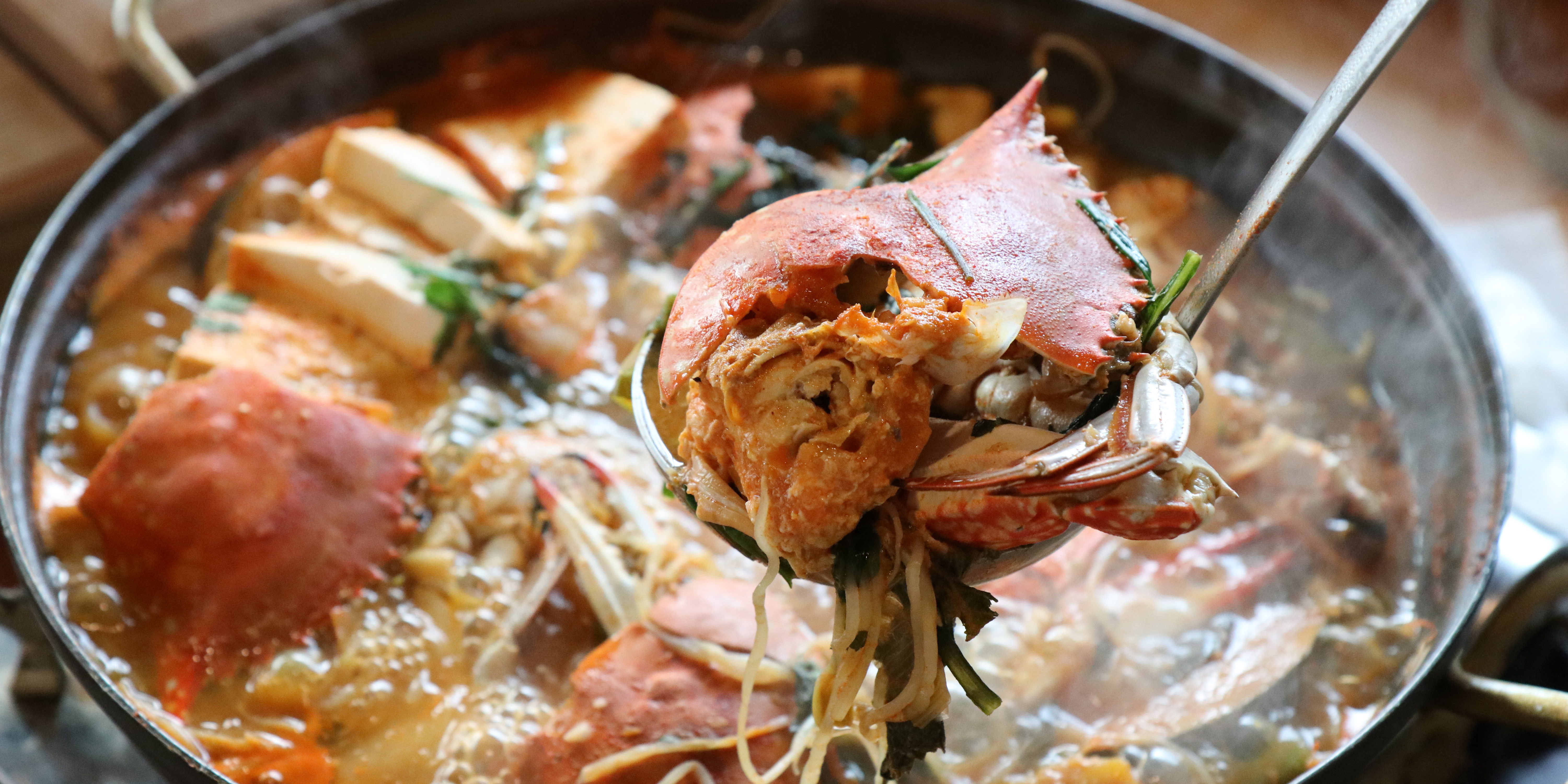Across the world, crab dishes are always a treat especially when you get your hands on the fattiest of these. In Korea, there is a festival dedicated to snow crabs and a dish that puts together the best of Korean flavors. Called kkotgetang, this dish makes use of kkotge, translated as ‘flower crab’ but is better known as blue crabs. These are considered the most ideal for the dish for its soft shells and meatiness.
With the soft-shelled, meaty crabs at the heart of the dish, the soup base could either be the crab itself or anchovies-based, and the additional ingredients include Korean radish, zucchini and leeks along with fermented favorites doenjang and gochujang, a dash of hot pepper flakes and red and green chili peppers.
One art that a serious food aficionado could probably master in this exercise is recognizing the best seasons to use male and female crabs. It is said that female crabs are more expensive in the summer due to their eggs – and one way to distinguish them is through their triangular apron located at their underbelly. A mature female crab has a slightly larger apron, with quite curved sides compared to the almost-perfect conical shape of a young, immature female crab.
The males, on the other hand, are distinguished by their unusual belly apron that has a longer and narrower tip than its female counterparts. Image-wise their aprons look like pens, and season-wise, it’s said that they’re meatier during the autumn season. But then again, practice makes it perfect.
*photo source: https://blog.naver.com/aldehyde7/221204438898







